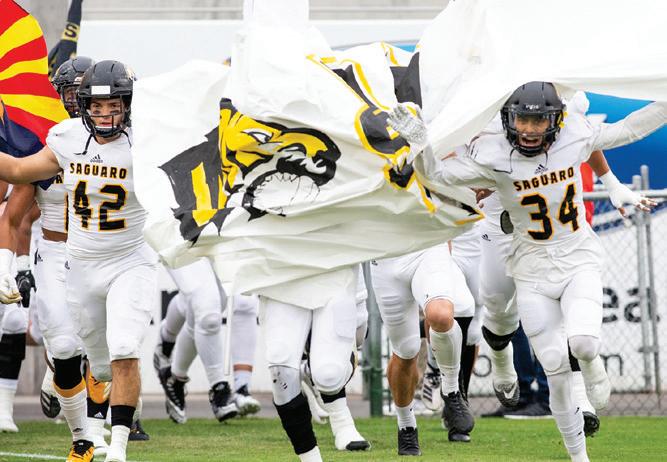16
NEIGHBORS
SCOTTSDALE PROGRESS | WWW.SCOTTSDALE.ORG | AUGUST 9, 2020
Neighbors
Scottsdale.org l
@ScottsdaleProgress
/ScottsdaleProgress
Scottsdale woman’s memoir revisits Madrid
BY KRISTINE CANNON Progress Staff Writer
D
iane Lorz Benitez may be living a quiet life in Scottsdale but her life leading up to retirement is one for the books – literally. Lorz Benitez’s memoir, “Without a Second Thought,” details the McCormick Ranch resident’s life and marriage in Madrid, Spain, in the 1960s and ‘70s, during the final decade of Francisco Franco’s dictatorship. “I’m sure every beginning writer has heard the phrase, ‘Write about a subject you know.’ I knew something about Spain,” Lorz Benitez said. “After living there for nearly 12 years, I knew quite a lot about it. So, even before I had a definite plan for a book, I had my subject, one I had fallen in love with years earlier – one I still loved.” Ten years later, “Without a Second Thought” is now slated to release Oct. 20.
Scottsdale resident Diane Lorz Benitez’s memoir, “Without a Second Thought,” tells the story of her life and her marriage in Madrid, Spain. (Courtesy of Diane Lorz Benitez)
“No one – at least I never found anyone – had written from the viewpoint of an American woman married to a Spanish engineer living in Madrid during the Franco regime. I thought I could fill that void,” Lorz Benitez said. Lorz Benitez grew up in the 1950s in Meadville, Pennsylvania. After leaving college to work in a highend retail store in Cleveland, Ohio, she quit her job at the age of 24, drained her bank account and sailed away with the love of her life, Alberto Benitez – a civil engineer from Madrid 10 years her senior. To write the memoir, she dug deep into her past and conducted years’ worth of research, including looking at maps and old photographs and reading her late husband’s unfinished autobiography. “What I gained from it was Alberto’s voice. All I had to do was translate it,” Lorz Benitez said, adding that she was able to retell Alberto’s Spanish Civil War
experiences verbatim. “And when it came to creating dialogue or expressing my husband’s opinions about education or government, for example, I had no doubts. He had confirmed everything clearly in that stack of yellowing pages,” she said. She said that without the marriage, she wouldn’t have had a book at all. “But what I really wanted to write about were my in-laws and their background,” she added. “I wanted to write my husband’s story, the part lived before we ever met and the history of war as he told it. I wanted to write about the Spanish landscape, the smell and taste of food, and the culture. I wanted to write about a language that, for a reason I can’t explain, speaks to me more deeply than my native tongue. That’s what I put in the memoir.” The hardest part about writing it, she said, was finding the invisible thread that
restoration project and a new treatment to their non-native plant experiments. After eight months of planning and preparation, including hiring on two botanists and training stewards, they felt ready to tackle this year’s projects. Mother Nature, however, had different plans. “We’re used to handling weather events. If we get a rain-day or two, we can usually wiggle around it,” Sprague said. “This year, of course, it was relatively dry until we started our field work – and then the rains just hit.” In response to the coronavirus pandemic, health officials began recommending limited social gatherings of no more than 10 people. “We started to get really creative,”
Sprague said. “We had to sit down and put on our thinking caps: ‘Are there projects that we can delay and should delay? Are there projects that absolutely have to get done? And if so, can we do them safely?’” Maintaining social distancing was easy in the field; the stewards had plenty of open space to spread out. The real challenge, however, was completing all of their projects with smaller teams. “We focused on the projects that had to get done and the ones that we could do safely. Luckily, it turned out that all the projects that we had could be done safely with some modifications, and that included cutting teams down to the abso-
see MEMOIR page 17
Conservancy undaunted by rain, pandemic
BY KRISTINE CANNON Progress Staff Writer
S
tanding on the side of Brown’s Mountain in the McDowell Sonoran Preserve in April amid a sea of blooming brittlebush blanketed with bright-yellow flowers, Tiffany Sprague found herself overcome with emotion. The Parsons Field Institute manager for McDowell Sonoran Conservancy and her team of stewards had just completed 12 field projects over two challenging months, during which they were walloped by unusually heavy rains and a global pandemic. “It was an incredible feeling being out there with these incredible people, knowing that we had accomplished so
much; and being able to see the results of that was definitely a highlight for me,” Sprague recalled. Spring is the busiest time of the year in the field for McDowell Sonoran Conservancy’s Parsons Field Institute. The staff and stewards typically conduct 10 projects then, with results that contribute to invasive plant species research and mitigation, restoration of native flora and soil crust restoration among other issues. “We have a lot of projects that occur throughout the year, but spring is when everything comes to a head,” Sprague said. “It’s when the desert really starts to come to life.” This year, they added two more projects – RestoreNet and soil crust field experiments – as well as new plots to their trail
see MCDOWELL page 17





